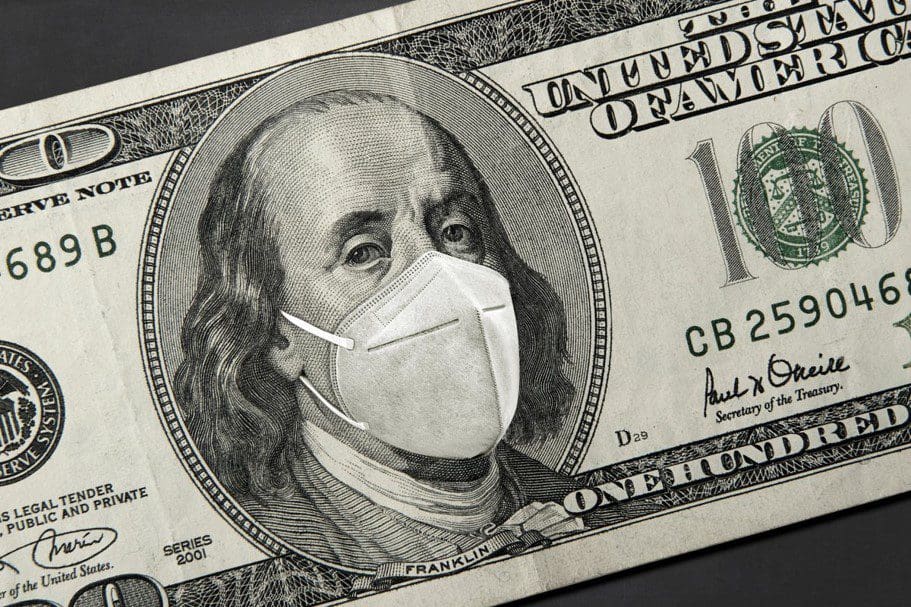By: Joseph Zeballos-Roig. —
KEY TAKEAWAYS:
- A bipartisan group of House lawmakers unveiled a $1.5 trillion stimulus plan on Tuesday.
- The plan is aimed at breaking through the impasse between the White House and top Democrats, but it faces long odds of becoming law.
- It would reinstate federal unemployment benefits with a two-month transition period, and later cap them to $600 so people wouldn’t earn more out-of-work than on the job.
- The proposal would also send a second round of $1,200 stimulus payments to Americans.
___________________________________________________
A bipartisan group of 50 House lawmakers unveiled a $1.5 trillion stimulus plan on Tuesday aimed at breaking through the impasse between top Democrats and the White House and setting the stage for a last-minute compromise before the November elections.
The amount is designed to be a middle ground between what Democrats and Republicans have called for so far. Members of the centrist group, known as the Problem Solvers Caucus, are led by Democratic Rep. Joshua Gottheimer of New Jersey and Republican Rep. Tom Reed of New York.
Some of the Democratic lawmakers are engaged in tough reelection fights, and are eager to show voters their drive to pass wide-ranging legislation.
The plan includes measures that draw support from both parties. Among them is another round of $1,200 stimulus checks for individuals and replenishment of the Payroll Protection Program to assist small businesses.
It also includes elements that have triggered fierce partisan disputes. It would revive federal unemployment benefits at $450-a-week for two months, then replace up to $600 of a worker’s past wages for five weeks. And it beefs up protections for workers and employers.
There’s also $500 billion in funds for cash-strapped state and local governments, as well as aid money for the embattled Postal Service, coronavirus testing, and rental assistance. It incorporated triggers to kick in nearly $400 billion in new spending if the pandemic continued taking a heavy toll on the economy in January. It also shrinks the package’s size if economic conditions improve.
The proposal faces long odds of becoming law. Top House Democrats promptly slammed the stimulus plan as a “retreat” of their long-sought economic relief priorities.
“When it comes to bolstering the public health system, supporting state and local governments and assisting struggling families, the Problem Solvers’ proposal leaves too many needs unmet,” a group of committee chairs said in a blistering statement.
Some Republicans say that a deal does not appear likely before Americans cast their ballots in November. However, Speaker Nancy Pelosi pledged on Tuesday the House would remain in session until an economic aid package was passed.
But most lawmakers are likely to head back to their districts when the recess begins on October 2. Majority Leader Steny Hoyer later clarified Pelosi’s remarks and said they would be kept on standby for any votes.
Talks between the White House and congressional Democrats collapsed in August amid fierce disagreements on federal spending levels and competing priorities. Much of the conflict was centered on state aid and unemployment benefits.
Negotiations haven’t formally restarted since then, and the White House hasn’t insisted on swift action to keep the economy afloat.
In late July, Republicans unveiled a $1 trillion stimulus plan, but Democrats attacked it as a paltry sum.
House Democrats passed a $3.4 trillion economic relief package in May, but now insist on at least $2.2 trillion in new spending. Treasury Secretary Steven Mnuchin and White House Chief of Staff Mark Meadows, the White House’s negotiators, said that price tag was too large.
Meanwhile, critical parts of the last economic stimulus that Congress approved in March have expired.
Nearly 30 million Americans remain on unemployment benefits, and a program the Trump administration put in place with executive action early last month is already depleted of funding with states capped at providing only six weeks of new jobless payouts. There are also signs poverty may be starting to rise again, according to researchers at the University of Notre Dame and the University of Chicago.
_________________________________________________
Original article can be found here: https://www.businessinsider.com/bipartisan-house-lawmakers-unveil-stimulus-plan-unemployment-economy-2020-9




















